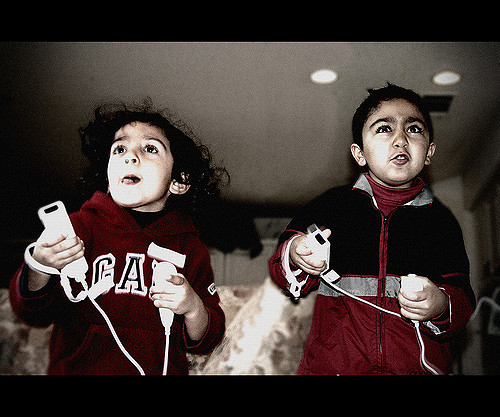How much screen time is good for your 8- or 9-year-old child? Do you need to supervise television shows? How much YouTube is too much YouTube? Should your child own a tablet or phone?
Things are changing. Sixteen years age, I thought I was being an open-minded parent when I let my 15-year-old get a flip phone. In 2018, a quarter of fourth grade students have a phone.
In the same way that opinions have changed about cell phones, there are now many new positions on screen time for kids. From my perspective, the changes are mostly on the side of being reasonable. Screen time is not bad for kids, it’s just that other activities are equally, if not more, important. I continue to assert – some might say lecture on – the importance of a healthy “Play Diet” that promotes a balance of digital play with other activities.
Fortunately, the opinions of professional educators, psychologists, and physicians about screen time have changed dramatically in the past decade. Twenty years ago screens were considered harmful to the minds of children, just as reading fiction books was in the nineteenth century. A moderated view now sees the good and bad of screen time and can be seen in documents from thought leaders such as Common Sense Media and the American Academy of Pediatrics.
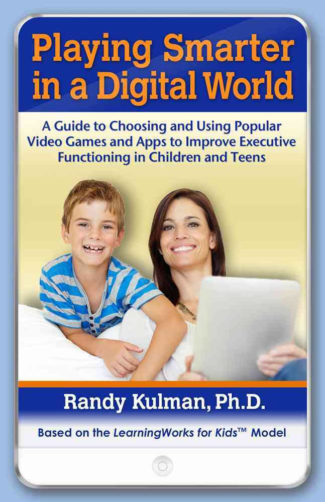
Our view at LearningWorks for Kids is that 8- and 9-year-olds need to focus primarily on physical, social, creative, and structured play. Increasingly, at these ages play dates are based upon playing a game together. That’s OK, if the kids also do other activities and get outdoors. We need to recognize that there are so many opportunities to learn from technology and then find the best tools and the best strategies to use them. You can read about our research-based developmental recommendations and screen-time strategies for 8- and 9-year-olds in previous posts. Here are some of our favorite apps for 8- and 9-year-old children:
To learn more about how to make screen time into a beneficial experience for your 8- or 9-year-old child, check out my book, Playing Smarter in a Digital World and be on the lookout for my newest book, Too Much Minecraft.
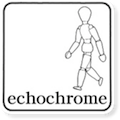 Echochrome In Echochrome, players must solve visual puzzles in a unique 3D environment. Players control a rotatable world, spinning and turning the world’s perspective in order to open up new pathways and lead the game’s character from point A to point B. Players will have to re-adjust their expectations of cause and effect, as the game constantly rewrites laws of gravity and physics using optical illusions. This is a game with simple controls and no objectionable content, but the difficulty of the puzzles may be too challenging for very young players. Therefore, Echochrome is recommended for players ages 8 and up.
Echochrome In Echochrome, players must solve visual puzzles in a unique 3D environment. Players control a rotatable world, spinning and turning the world’s perspective in order to open up new pathways and lead the game’s character from point A to point B. Players will have to re-adjust their expectations of cause and effect, as the game constantly rewrites laws of gravity and physics using optical illusions. This is a game with simple controls and no objectionable content, but the difficulty of the puzzles may be too challenging for very young players. Therefore, Echochrome is recommended for players ages 8 and up.
 The Legend of Zelda: Phantom Hourglass In The Legend of Zelda: Phantom Hourglass, players take on the role of Link, a young boy tasked with saving his friend Tetra from an evil ghost ship. Traversing the vast world of the “Great Sea,” players embark on an adventure spanning across many small islands, each of which contains its own unique characters and enemies. Using the DS touch screen, players guide Link across land and water in search of the ghost ship. Players must battle foes, solve puzzles, and collect items in their quest to save Tetra. The Legend of Zelda: Phantom Hourglass features mild cartoon violence, but no blood or any other potentially offensive content. However, reading skills are required throughout the game. Due to the game’s mild violence and reading requirements, it is recommended to players ages 7 and up.
The Legend of Zelda: Phantom Hourglass In The Legend of Zelda: Phantom Hourglass, players take on the role of Link, a young boy tasked with saving his friend Tetra from an evil ghost ship. Traversing the vast world of the “Great Sea,” players embark on an adventure spanning across many small islands, each of which contains its own unique characters and enemies. Using the DS touch screen, players guide Link across land and water in search of the ghost ship. Players must battle foes, solve puzzles, and collect items in their quest to save Tetra. The Legend of Zelda: Phantom Hourglass features mild cartoon violence, but no blood or any other potentially offensive content. However, reading skills are required throughout the game. Due to the game’s mild violence and reading requirements, it is recommended to players ages 7 and up.
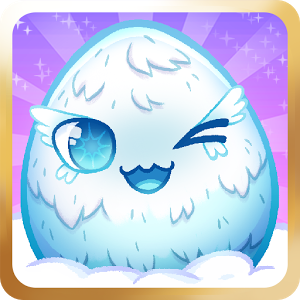 Mini-Guide: Egg The goal of Egg! is for the player to care for and hatch a variety of different types of eggs. The player must feed the egg (according to its personal tastes), bathe it, help it sleep, and play games with it. After a certain amount of time has passed (based on type), the egg will hatch into a cute animal. How fast an egg hatches will depend on how well a player cares for it. There are in-app purchases available. The ESRB has rated Egg! E for Everyone and we stand by this rating. Kids 6 and older will get the most of the planning and self-awareness practice Egg! has to offer.
Mini-Guide: Egg The goal of Egg! is for the player to care for and hatch a variety of different types of eggs. The player must feed the egg (according to its personal tastes), bathe it, help it sleep, and play games with it. After a certain amount of time has passed (based on type), the egg will hatch into a cute animal. How fast an egg hatches will depend on how well a player cares for it. There are in-app purchases available. The ESRB has rated Egg! E for Everyone and we stand by this rating. Kids 6 and older will get the most of the planning and self-awareness practice Egg! has to offer.
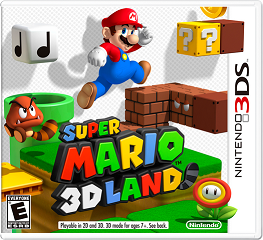 Super Mario Land 3D In Super Mario Land 3D, the goal is to make it to the flag at the end of each stage, defeating enemies, collecting power-ups, and picking up coins along the way. By collecting special Star Coins in each level — many of which are hidden from view or hard to get — new levels become unlocked, making locating them crucial to advancing in the game. If players don’t have the necessary Star Coins to advance, they’ll have to revisit previous stages to seek them out. Once they reach the end of each world, Mario boards an airship, and must face off against one of the Koopalings or Bowser himself! Super Mario 3D Land features optional 3D effects, and is fairly easy to play and control. There is minimal cartoon violence but no inappropriate or otherwise offensive content, so the game is recommended to players ages 7 and up.
Super Mario Land 3D In Super Mario Land 3D, the goal is to make it to the flag at the end of each stage, defeating enemies, collecting power-ups, and picking up coins along the way. By collecting special Star Coins in each level — many of which are hidden from view or hard to get — new levels become unlocked, making locating them crucial to advancing in the game. If players don’t have the necessary Star Coins to advance, they’ll have to revisit previous stages to seek them out. Once they reach the end of each world, Mario boards an airship, and must face off against one of the Koopalings or Bowser himself! Super Mario 3D Land features optional 3D effects, and is fairly easy to play and control. There is minimal cartoon violence but no inappropriate or otherwise offensive content, so the game is recommended to players ages 7 and up.
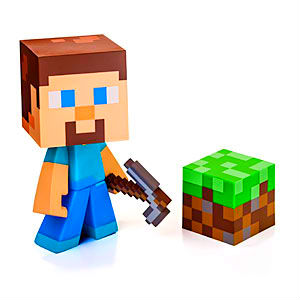 Minecraft Minecraft is an open-world game unlike any other. Players are placed in a borderless, randomly generated land with no supplies, directions, or objective. It is up to them to decide what to do and how to do it. Players collect materials from the world around them in order to ‘craft’ items and build whatever their mind can imagine. The concept is similar to playing with LEGOs, only the amount of blocks is limitless. There are forests to explore, mountains to climb, oceans to cross, and dungeons to discover. When the sun goes down, the monsters appear, and players must fend them off or build shelter for protection. Objectives are imagined by players, allowing them to truly create their own virtual world, mining materials and building tools to better help them do so. Due to some minimal violence and the initial complexity of the game, Minecraft is recommended for ages 6 and up.
Minecraft Minecraft is an open-world game unlike any other. Players are placed in a borderless, randomly generated land with no supplies, directions, or objective. It is up to them to decide what to do and how to do it. Players collect materials from the world around them in order to ‘craft’ items and build whatever their mind can imagine. The concept is similar to playing with LEGOs, only the amount of blocks is limitless. There are forests to explore, mountains to climb, oceans to cross, and dungeons to discover. When the sun goes down, the monsters appear, and players must fend them off or build shelter for protection. Objectives are imagined by players, allowing them to truly create their own virtual world, mining materials and building tools to better help them do so. Due to some minimal violence and the initial complexity of the game, Minecraft is recommended for ages 6 and up.
Featured image: Flickr user Sherif Salama

